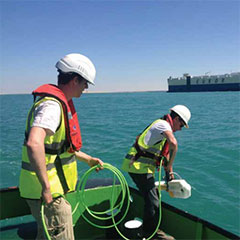Often an overlooked and undervalued factor in the offshore sector, unexploded (UXO) ordnance can nevertheless have far reaching consequences including considerable delays to projects or even a threat to life. We approached Bas Coolen of ADEDE to discuss this vital issue – and to explore the benefits of combining UXO and Archaeological surveys.
PES: Welcome to PES magazine, would you like to introduce the company and tell us a little about your involvement with the wind sector?
Bas Coolen: ADEDE is a Belgian company with offices in the UK and the Netherlands and we specialise in UXO and Archaeology. For the wind sector, we carry out UXO risk assessments, surveys, identification and clearance. With regard to archaeology, we provide the full scale of archaeological research from desk research up to and including salvage.
PES: And where in the world are your key markets right now? Do you have any plans to move into new territories?
BC: The North Sea, West Atlantic and the Baltic are most important right now, both because of the wind parks that are being – or due to be – developed, but also because these seas have connected and bordered the NW-European economies for centuries. This was of course recognised during times of conflict and all fighting nations did their best to disrupt the enemy’s trade routes, destroy their shipping and incapacitate port infrastructure. So the seabed is home to both a huge archive of recent history but there is also an incomprehensible amount of UXO remaining from most recent episodes of armed conflict in Europe. Our customers work worldwide and we follow them where their projects take them. Thus far we worked in Vietnam, Indonesia, Singapore and Canada, to give an idea of the global spread of the offshore UXO issue.



























